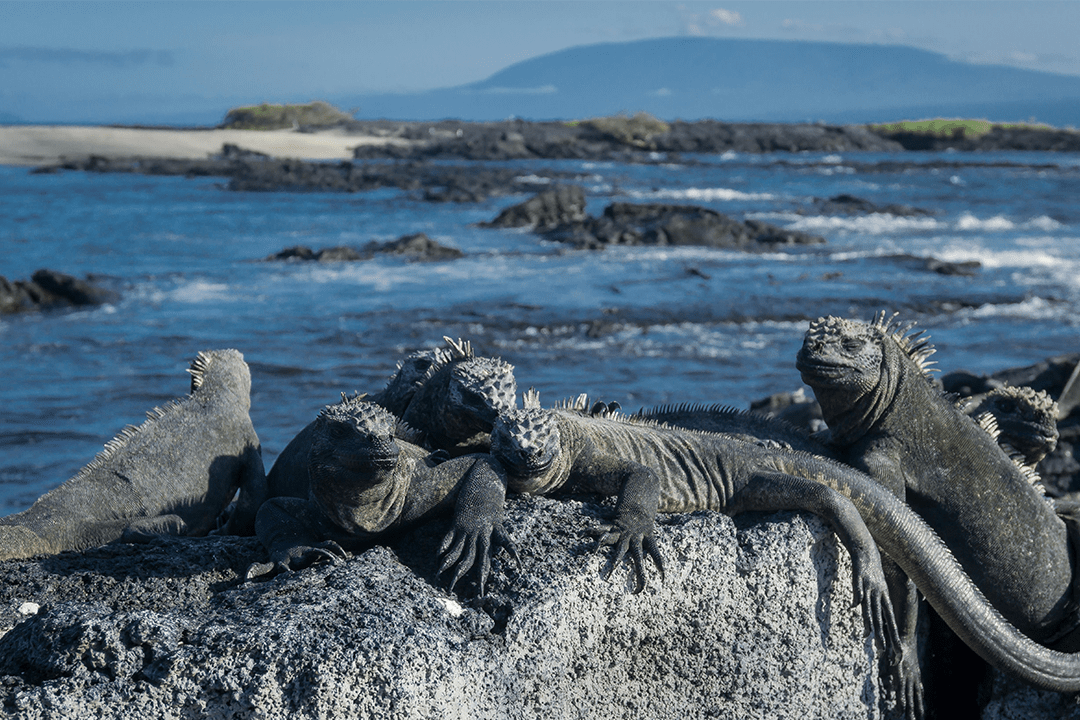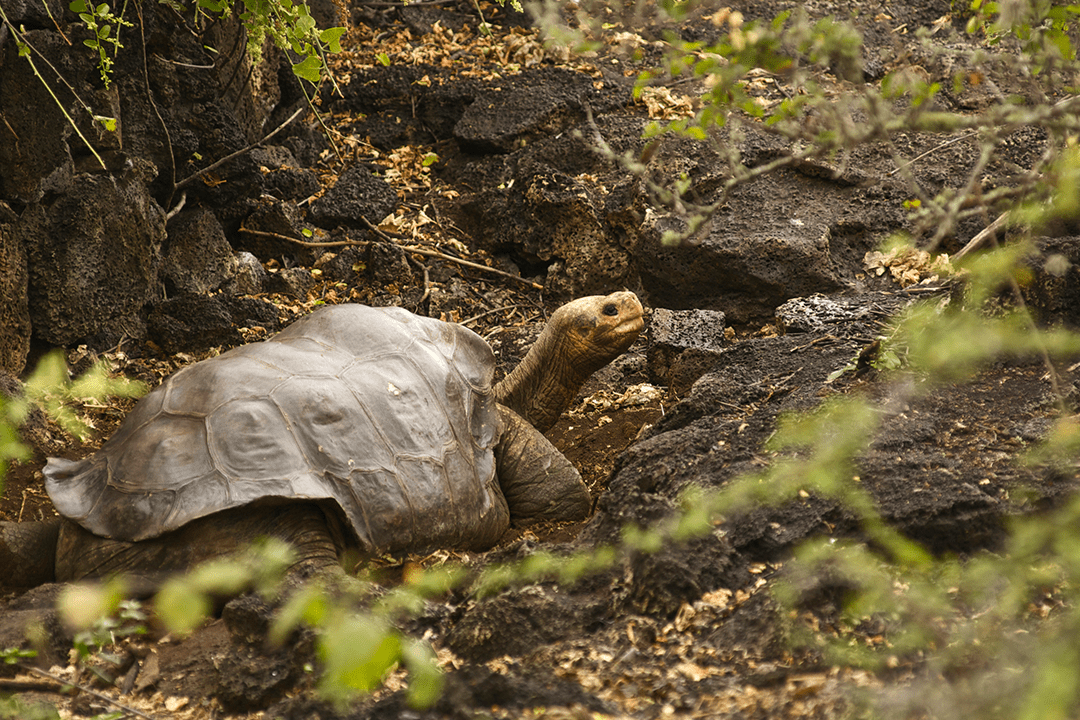Galapagos Islands
The Galapagos Archipelago is made up of 18 main islands along with more than 100 smaller islets and rocks spread across an area of 17,000 square miles (45,000 square kilometers) of ocean. There are over 2,000 species of animals living in the Galapagos, many of which are endemic to the islands including giant tortoises, marine iguanas, lava lizards, flightless cormorants, and Galapagos sea lions. Only four islands are inhabited representing three percent of the territory, while the remaining 97 percent comprise the Galapagos National Park, created to protect native species and their fragile environment. The Galapagos Islands have been also declared a UNESCO World Heritage Site recognizing their unique value and rich biodiversity. As the source of inspiration for Darwin’s evolutionary theory, the world developed a fascination for the Enchanted Islands, and today visitors follow in his footsteps longing to discover for themselves what makes a journey to the Galapagos one of the greatest adventures of all time.
Accommodations are only available in the four inhabited islands of the Archipelago, mainly in the town of Puerto Ayora in Santa Cruz Island. Since staying overnight is prohibited anywhere else in Galapagos National Park, this means that travelers can only take day trips to the main visitor sites in company of an authorized guide. Sailing the Galapagos on a cruise ship is a far more convenient option to ensure you make the most out of your trip, especially when it comes to the luxurious comforts and ultimate privacy you can expect from the brand new Aqua Mare superyacht.
History of Discovery
In 1535, the Bishop of Panamá, Fray Tomás de Berlanga set off to Peru under the orders of King Charles to arbitrate a dispute between two Spanish conquistadores over the control of the former Incan Empire territory. Strong winds and currents caused his ship to deviate off course to the Galapagos Islands, becoming its official discoverer. Berlanga shared his impressions on a written account in which he described their struggle to find fresh water in the islands, considering them to be worthless and infertile, although highlighting the presence of birds, turtles, and other species.
Over the course of the late 16th century, the Galapagos Islands would be frequented by English pirates and buccaneers for their strategic location close to Spanish trade routes between America and Spain. By the end of the 1700s, the profitable whaling business attracted numerous whaler ships to the Galapagos for its population of sperm whales, causing certain species of turtles to disappear as they were hunted down for their meat. Famous novelist and author of Moby Dick, Herman Melville, was one of the American whalers who arrived in the Galapagos, inspiring him to write his short story on the islands called The Encantadas (Enchanted Islands), as they were known for among pirates and whalers.
In 1832, the newly founded Republic of Ecuador took official possession of the islands from former Spanish ownership and named them the Archipelago of Ecuador, which was later changed to ‘Archipelago de Colon’, although the original ‘Galapagos’ remains the most used name.
Darwin & The Galapagos

Of the many visitors that have stepped foot on the Galapagos, the most notable character is undoubtedly English naturalist Charles Darwin, who arrived in 1835 for a five-week journey that would forever tie his name to the Enchanted Islands. At the age of 23, he embarked on the HMS Beagle as a naturalist for the ship’s second survey expedition under the command of captain Robert FitzRoy. Darwin visited four islands: San Cristobal, Floreana, Isabela and Santiago, and collected several biological and geological specimens.
At the time, Darwin seemed more interested in exploring the geological features of the island, studying closely the rock formations and lava flows, and developing valuable theories that would contribute to his geological discoveries. However, it was his biological observations on how the same kind of animal had different traits based on the islands they were found in, that would years later lead him to his greatest theory.
One of the species Darwin became fascinated with were the giant tortoises of Galapagos. He noticed each kind of tortoise possessed unique features that allowed them to survive in their specific environment. For example, the ones with a dome-shaped shell had shorter, less flexible necks as they lived in humid highlands with rich vegetation on the ground. Those with saddle-shaped shells lived in a dryer habitat and had longer necks enabling them to reach cacti and other vegetation higher in trees. Similarly, he discovered that there were numerous species of finches, with beaks of different shapes and sizes which were suited to their diet and habitat.
Decades later, Darwin finally published his acclaimed book “On the Origin of Species” in 1859, where he consolidated his findings and introduced the concept of evolutionary adaptation through the process of natural selection, referring to his discoveries on the Galapagos Islands.
Galapagos National Park & Conservation

The Galapagos Islands were declared a National Park in 1959, becoming Ecuador’s first National Park. Through an executive decree, 97 percent of the land area of the Galapagos Islands became protected, except for those that had already been established as human settlements. This milestone event towards the protection of the exceptional flora and fauna of the Galapagos coincided with the 100th year anniversary of the publication of Darwin’s On the Origin of Species. That same year, the Charles Darwin Foundation was established to complement the work of the National Park through scientific research and environmental education, followed by the creation of its Research Station on Santa Cruz Island.
Another important event towards safeguarding the Galapagos pristine ecosystem was the approval of the first management plan of the National Park in 1974, which continues to be developed periodically. In 1998, the Galapagos Marine Reserve encompassing 51,352 square miles (133,000 square kilometers), was also created, restricting fishing activities within the Archipelago in protection of the rich marine ecosystem. In 1978, the Galapagos Islands were declared a UNESCO World Heritage Site.
The Galapagos Park management has implemented strict rules that all visitors must follow to minimize any negative impact that tourism may have on this fragile ecosystem. These include keeping a safe distance of 6 feet (two meters) from wildlife to avoid any disturbance, staying within the marked trails at visitor sites and being accompanied by a GNPD authorized naturalist guide at all times, never introducing any foreign animal, plant or food to the islands, proper disposal and recycling of waste, prohibition of flash photography and drones, amongst other measures.



